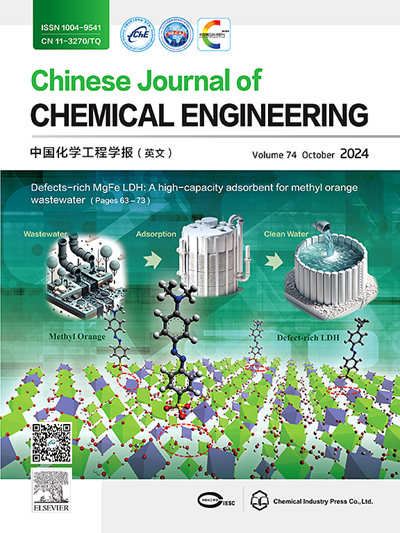等离子体活化过硫酸盐对环境持久性污染物的降解性能及机理研究
IF 3.7
3区 工程技术
Q2 ENGINEERING, CHEMICAL
引用次数: 0
摘要
通过实验和理论计算相结合的方法,研究了介质阻挡放电等离子体对环境中持久性污染物(EPs)的降解性能及其机理。结果表明,DBD血浆可产生活性自由基,包括·OH、1O2和·O2−,它们主要通过·OH和·O2−激活过硫酸盐,产生强氧化自由基SO4−·。该工艺有利于加强MeP废水的降解和矿化。通过动力学、能量效率和辅助因子计算,结合不同影响因素下的降解情况,评价了DBD/过硫(PS)降解MeP的性能。采用自由基清除法和紫外分光光度法对体系中的活性物质进行了分析。结果表明,过硫酸盐被DBD血浆有效活化,其中·O2−起重要作用。过硫酸盐的存在提高了溶液中H2O2和O3的含量。利用LC-MS检测MeP降解过程中形成的中间体,然后结合密度泛函数理论(DFT)化学预测预测反应位点并推断对羟基苯甲酸甲酯(MeP)的潜在降解途径。毒性评估软件证实,PS/DBD系统可降低水柱中的急性毒性和发育毒性。研究表明,DBD等离子体活化过硫酸盐在处理新发现的污染物方面是成功的。本文章由计算机程序翻译,如有差异,请以英文原文为准。
Degradation performance and mechanism of plasma-activated persulfate for environmental persistent pollutants
This study comprehensively investigates the degradation performance and mechanism of environmental persistent pollutants (EPs) by combining experimental and theoretical calculations with dielectric barrier discharge (DBD) plasma synergized with persulfate. The findings demonstrated that DBD plasma could generate reactive radicals, including ·OH, 1O2 and , which primarily activate persulfate through ·OH and to produce the potent oxidizing radical SO4−·. This process facilitated enhanced degradation and mineralization of MeP wastewater. The performance of DBD/persulfute (PS) in degrading MeP was evaluated by kinetics, energy efficiency, and co-factor calculations, combined with degradation under different influencing factors. The actives in the system were analyzed by free radical scavenging assays and UV spectrophotometric testing to determine their effects. The findings indicated that persulfate was effectively activated by DBD plasma and that played a significant role. The presence of persulfate elevated the levels of H2O2 and O3 in the solution. The intermediates formed during the degradation of MeP were detected using LC-MS and then analyzed alongside density-functional theory (DFT) chemical predictions to anticipate the reactive sites and deduce the potential degradation pathways of methylparaben (MeP). Toxicity evaluation software confirmed that the PS/DBD system reduces acute and developmental toxicity in the water column. The study showed that DBD plasma-activated persulfate was successful in addressing newly identified contaminants.
求助全文
通过发布文献求助,成功后即可免费获取论文全文。
去求助
来源期刊

Chinese Journal of Chemical Engineering
工程技术-工程:化工
CiteScore
6.60
自引率
5.30%
发文量
4309
审稿时长
31 days
期刊介绍:
The Chinese Journal of Chemical Engineering (Monthly, started in 1982) is the official journal of the Chemical Industry and Engineering Society of China and published by the Chemical Industry Press Co. Ltd. The aim of the journal is to develop the international exchange of scientific and technical information in the field of chemical engineering. It publishes original research papers that cover the major advancements and achievements in chemical engineering in China as well as some articles from overseas contributors.
The topics of journal include chemical engineering, chemical technology, biochemical engineering, energy and environmental engineering and other relevant fields. Papers are published on the basis of their relevance to theoretical research, practical application or potential uses in the industry as Research Papers, Communications, Reviews and Perspectives. Prominent domestic and overseas chemical experts and scholars have been invited to form an International Advisory Board and the Editorial Committee. It enjoys recognition among Chinese academia and industry as a reliable source of information of what is going on in chemical engineering research, both domestic and abroad.
 求助内容:
求助内容: 应助结果提醒方式:
应助结果提醒方式:


